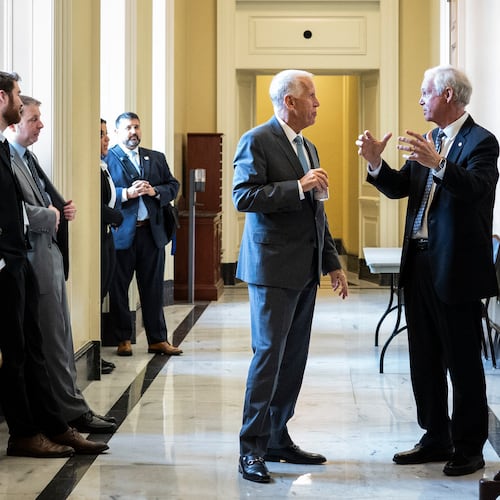The person who suffered “death no. 7” is my sweet, beautiful mother, who, by succumbing to the virus, is now part of Georgia Department of Community Health statistics.
Her Atlanta nursing home had been doing well until, in an instant, it wasn’t. Though my sister and I didn’t go online daily to look at the stats, we did so frequently. In mid-July, the calmingly low numbers spiked, prompting an audible gasp.
My mother had been in the facility for nearly seven years — a painful decision occasioned by the loss of her ability to walk and the increasing onset of infections that led to hospitalizations.
In early March, I couldn’t understand her facility’s lack of action with regard to the virus. Yet, a few weeks later, when they shut their doors, I longed for the days of rushing up to my mother’s room four nights a week. Neither my sister nor I had in-person contact with my mother again.
Credit: contributed
Credit: contributed
I try in vain to remember our last visit. I hadn’t known that it would be consequential, but I have this as solace — we brought our best to those conversations.
They followed predictable arcs: did she have any current needs; what foolish things had my dog and cat done lately; perhaps a smattering of current news (often about the Hollywood stars she followed); and then the grocery list for my next visit, always topped by Ruffles potato chips.
Like many facilities, hers decided to do a “resident parade” after months of no visits. I knew instantly that my mother would not be signed up. And “parade” — did they think she was a circus animal? I spoke of the better visits we would have when the virus was at bay, and she agreed.
With my mother’s birthday approaching on May 31st, I secured a nurse supervisor’s permission to see her at the front door. I would shout across the parking lot. However, the administrator blocked our plan. I decided not to push it, my approach being to fly under the radar so their care of my mother would be better. Honey. No vinegar.
What did that leave us with? Reliance on the worst phone system ever used by a business. It often failed, sometimes affecting the entire building, sometimes individual lines, and it was perpetually understaffed so that calls ping-ponged around the building, rarely landing where you hoped.
For a while, like many facilities, hers was sending letters with virus updates. I would dutifully scan them and send them to my sister. Quickly, of course, that methodology was revealed for what it was: flat-out unhelpful. The virus is wily. Stop to document its ravages, and the virus sprints ahead, causing more.
In late June, I got a call from a nursing supervisor; my mother had been exposed to COVID-19 by staff. They would test her in 10 days and isolate her until they knew her status. Hence, anyone entering her room would don full PPE. That did not happen. I know it from my own eyes in the three video chats my sister and I had with her.
My sister and I chased multiple sources regarding the results of my mother’s first COVID-19 test. Shouldn’t the nurse supervisor who alerted me to the exposure have called me back? She didn’t. No one did.
Finally, I got the social worker on the phone, who said she “thought” the result was negative but would get my mother’s nurse to call me. That nurse is efficient and compassionate; we were lucky to have her. But in the melee caused by COVID-19, she too stopped returning calls.
She eventually relayed the negative result, although apparently as soon as that came in, the protocol shifted to each resident being tested weekly. And so my mother had second and third tests, also negative. Two days before she died, I got a call confirming the fourth test finally hit the jackpot: she had the virus.
But we already knew: she was out of breath, running a low-grade fever, and having nausea and diarrhea. Her speech had become degraded, and the only people patient enough to ask how she felt were my sister and me. But we were on the outside looking in, facing dropped and unreturned calls — facing silence regarding my mother’s fate.
Hospice went in a week before she died but couldn’t follow up as they normally would have with the virus spreading like wildfire. No one told the hospice staff that my mother was considered COVID-positive. They found out when they came to pronounce her dead on July 20th: she had been moved from the fourth floor to the third, the makeshift COVID-19 ward.
Four days after my mother’s death, record time for a facility that didn’t break any responsiveness records, I received a form letter.
My mother’s name appeared only on the envelope. Inside, there was no salutation; it got down to business quickly: “We want to thank you for allowing us to take care of your loved one. We are very sorry for your loss and wish you and your family the best during this time.”
And when her death certificate arrived from the funeral home, it did not list COVID-19. But it will. My sister and I are seeing to that.
At present, decedent no. 7 — my beautiful, sweet mother — has been joined by 27 others. And still it goes.
At the end of the form letter, it asks for feedback. That, I hope, is what this is.
Susan Carini lives in Atlanta and has spent her career in higher education working as a writer and editor.
About the Author
Keep Reading
The Latest
Featured




